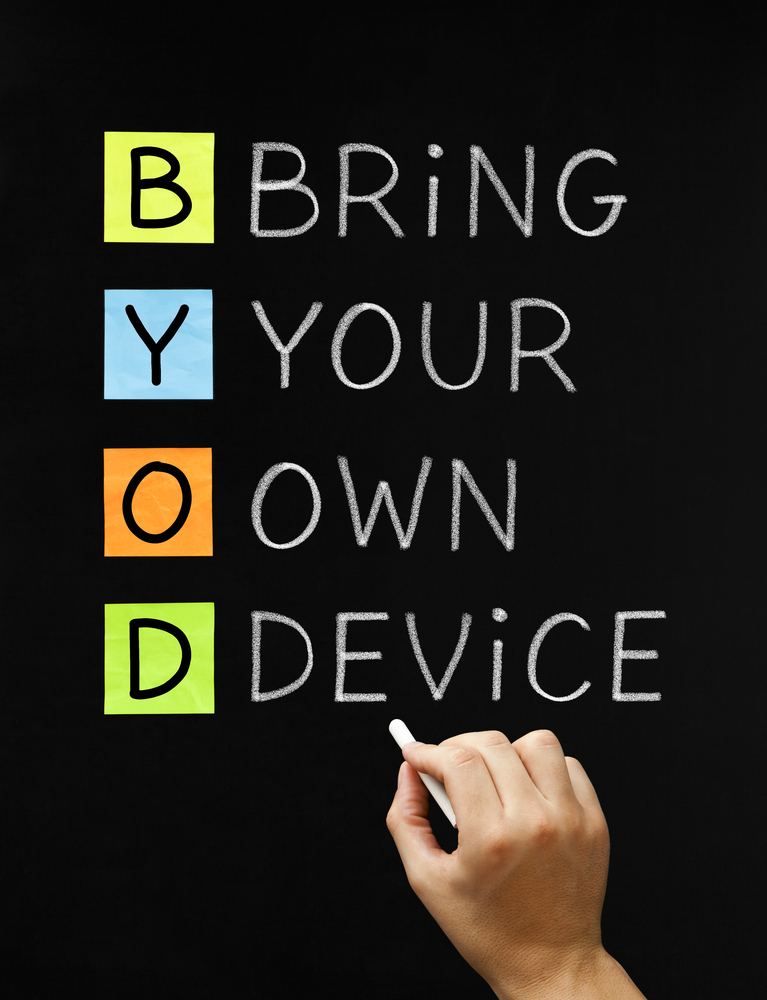How Does BYOD Effect Your Office IT Setup?

BYOD, if you’re not yet familiar with the phenomenon, stands for ‘Bring Your Own Device,’ and it’s becoming a serious issue in almost every computer-based workplace. In other words, that’s practically all of them.
BYOD broadly refers to the act of taking one’s own personal pieces of technology - mainly laptops, phones and tablet computers - into the workplace, then using them for work purposes.
In an age in which we feel a twinge of uncertainty any time we’re not physically connected to at least 1-3 pieces of gadgetry, it’s not surprising that they’ve begun to invade our workspace. Nevertheless, for any company or office with any kind of reliance on computers (again, all of them), it’s a very real and current issue that cannot be ignored.The Stats
Research into BYOD has shown that the trend is on a meteoric rise, with 75% of employees in high-growth economies stating that they are happy to bring their own devices to work; 79% of these believe this enables them to be more productive.
However, 49% report that their respective IT departments are unaware of their activity, or simply leave it unregulated. This equates to half the working world using the BYOD trend without any kind of consequence or guidelines.The Downsides
Perhaps the most obvious downside is that a personal device will be loaded with non-work-related material, making distractions an even greater threat than usual. That episode of Sherlock your employee downloaded last night is still sitting there, leering at them every time they access the desktop, ready and able to ignite a spark of procrastination that could even draw in other workers.
Personal devices can be loaded with games, distracting text messages, private emails, Facebook and a host of other activities that almost certainly have nothing to do with work. This promotes a slacking and horseplay mentality not conducive for an office environment.
There’s also the issue of opening up your office network to a private device. Not only are you giving someone access to potentially private information, they are doing so from a device over which you have very little control. This is not even considering the problem of potential viruses and other malware that such devices may share. In addition, when someone leaves the workplace, they take private files and data with them, and policing every device in this way seems impossible.
From a purely IT standpoint, personal devices will come with a plethora of operating systems, processing speeds and methods of use. Problems with the device then become even more of a headache for IT staff, as there is no standardized system or process; every device will be different. For example, if your office uses Juniper equipment, there’s a good chance that only a select few devices will instantly be compatible.The Benefits
Despite these potential downsides, the crucial benefits that can come from allowing workers to use their own devices cannot be overlooked.
First and possibly foremost, workers will be familiar with their own technology and well-versed with the locations of files and programs. As opposed to using clunky, sometimes outdated office hardware that require a period of familiarity, this is an instant improvement in both productivity and worker satisfaction.
The cost to the company also dramatically decreases, as people are happy to inflict wear-and-tear upon their own hardware as long as they are allowed to bring them into work. This means less maintenance for the IT department and fewer funds spent on replacing technology, as the employee will cover the cost themselves. This also eliminates the painful process of upgrading an entire office worth of devices all at once; employees will simply upgrade at their own pace. Manufacturers of office hardware, such as BrightStar Systems, should be aware of the trend and therefore capable of handling the transition.An Unstoppable Trend
If work hours being frittered away on ‘Bejeweled Blitz’ is something that remains a concern, an efficient BYOD policy is the most appropriate compromise. Certainly, allow employees to bring in their own devices - if you’ve ever met a human from the 21st century, you’ll know the practice is nigh-unstoppable anyway - but have clear regulations in place for their use.
The prevalence of the BYOD trend continues to grow and will undoubtedly soon become a permanent mainstay in offices around the world. Recognizing this fact and having a solid policy in place - both to defend productivity and your office network - is the wisest course of action in deciding whether devices ruin an office or create a more hospitable workplace for all employees.

 Lilly
Lilly






